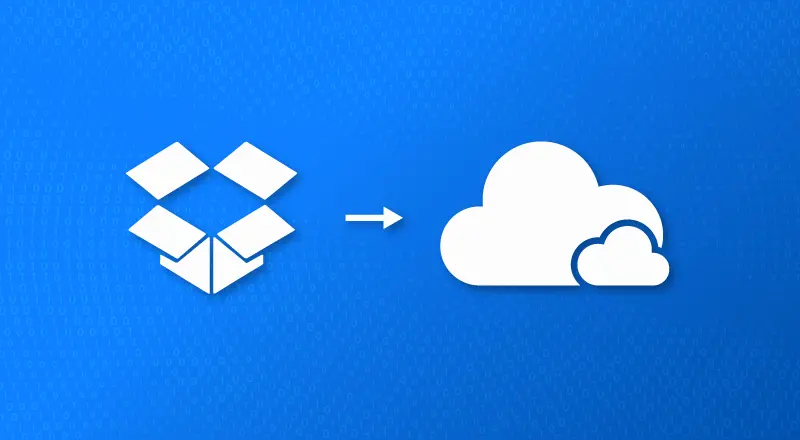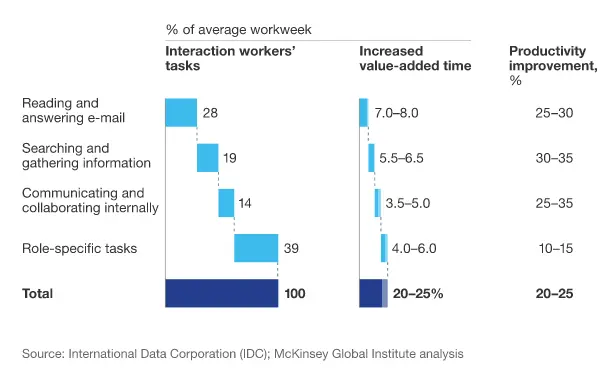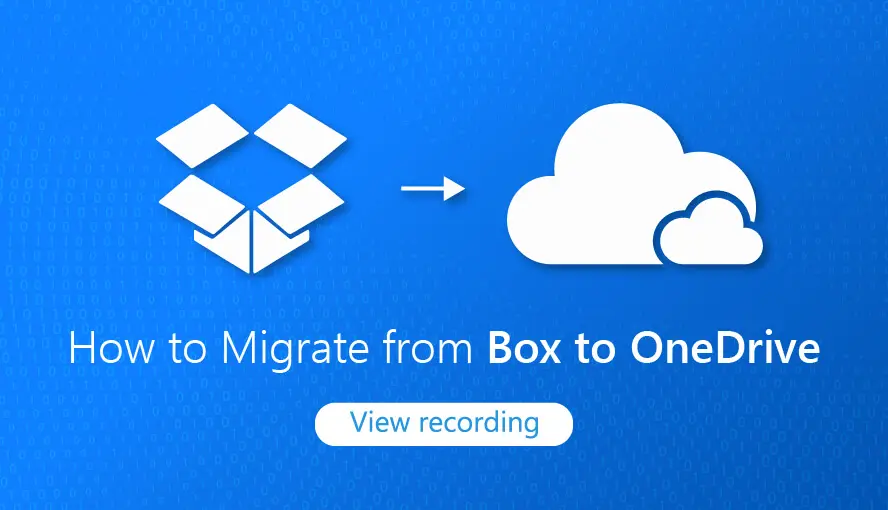
A highly collaborative culture helps to keep the workforce engaged and increases productivity, i.e., projects completed on schedule and of superior quality. The idea is to reduce the time wasted tracking down emails and content. According to McKinsey Global Institute (with IDC data), productivity gains of 20-25% could be made with improved social communication and collaboration technologies. OneDrive for Business is the ideal option for enterprise-level content sharing and collaboration. Microsoft’s description of OneDrive indicates its advantages to communicate and collaborate, “OneDrive for Business is a place where you can store files from your computer into the cloud, and access them from any device, or share them with others. As part of Office 365 or SharePoint Server, OneDrive for Business lets you update and share your files from anywhere and work on Office documents with others at the same time.”

Before moving on to the do’s and don’ts involved in migrating from the Box to OneDrive, it is essential to note the important benefits of OneDrive as highlighted below:
• OneDrive Business as part of Office 365, comes with Word, Excel and PowerPoint making it an ideal fit for actual enterprise-level content creation, sharing, and collaboration.
• Each user gets unlimited OneDrive storage (Office 365 Enterprise E3 and E5 plans both give 5 TB of primary storage per user, with the ability to request more from Microsoft). For enterprises, local memory space on laptops is considerably reduced and brings down the costs. Also, network management and the risk of malware is eliminated.
• OneDrive for Business offers a simple, user-friendly platform to access the latest versions of work files. Sharing documents is easy and provides plenty of storage.
• Its professional environment is suitable for project activities where permissions can be monitored for specific folders, and people can collaborate in real-time to share and view their files. Emailing heavy videos or images can be time-consuming and, in some cases, impossible. Uploading them onto the cloud and sharing them with stakeholders takes OneDrive for Business to the next level in communication and collaboration.
• OneDrive for Business is affordable for mid-size and small enterprises, and importantly it fits into the Office 365 offerings.
For those enterprises that are currently using Box, the above reasons make compelling checkpoints to migrate Box to OneDrive.
Migrate Box to OneDrive: With the decision made to migrate, there are some Do’s and Don’ts involved.
Do’s: Build a project scope from implementation to testing.
The migration process is similar to a software project. For it to work accurately and not throw up millions of bugs and errors requires a clear project plan in place. As part of this plan, documentation is a must. This will ensure that stakeholders, as well as the project executors, will have access to references to course correct, fix bugs and transform in the future.
Do’s: Decide on the data quantity to be migrated.
A successful migration hinges on the planning. This needs to happen long before the actual migration is initiated. Data stored in the Box can be cluttered similar to the attic in an old house. There is a lot of stuff there, but no one needs it. A clear plan would require some specific data points. For example, how many years’ data would need to be migrated? Often one of the critical reasons for migration headaches is the task of moving vast amounts of data. If the decision is made early on, then the migration process is greatly simplified.
Do’s: Ensure `clean’ data.
Migrated data, to be accessible should adhere to the business logic and fields in Office 365 and OneDrive. This can seem overwhelming but is vital to ensure that the data fits into the new business logic and is correctly classified for easy recall and collaboration.
Do’s: Map the data in a simplified manner.
The idea of migrating from Box to OneDrive is to get additional benefits from the migration. This will be possible when the fields for data are defined and mapped well. This defining and mapping requires an understanding of the business, functions and the data itself. It requires the engineers to `think’ like the end users, collaborate with business heads and finally map the data to simplify search and collaboration functions. During the migration, one may realize that the field structure in the Box is different from the fields in OneDrive. Adding more fields, customizing fields and ensuring comprehensive mapping is key to a successful migration.
Do’s: Test the data
Before embarking on a full migration project, it makes sense to run a pilot test. This will ensure that the fields are correct and the necessary data relationships are in place.
To take an example, a piece of content may have one owner but is shared with a group in the Box. When this content is migrated to OneDrive, it will now reside in the content owner’s library, and the group will become a secure group. An email has to be generated and sent to the group members inviting them to the group, and the content will now appear in the `Shared with Me’ list. The entire process needs to be planned and executed to ensure that the migration has not compromised the security of the content and is still available for all the members of the group.
Don’t forget the prep work for the migration process.
Identifying the people responsible for migration is essential. For example, there needs to be a Global Administrator to ensure that delays will not hamper the migration process. The administrator should understand the importance of mapping and have an obvious idea of the user mapping process, between each user’s Box account and their corresponding Office 365 user account. If the account, for example, is in `blocked’ status, then the migration process will not be smooth flowing.
Don’t miss out on all the advantages of Office 365.
The key reason for migration, i.e., the advantages of Office 365, should not become the stranglehold choking the value to be derived from the migration. This essentially means that OneDrive has several salient advantages and these need to be borne in mind during the migration process. For example, OneDrive’s main advantage is its ability to provide collaboration, but places the power in the hands of the content owners, in terms of security, viewership and edit control. To maximize this aspect requires a good deal of understanding of OneDrive’s potential and planning the migration to maximize its benefits. Rushing in heedlessly will work, but you will be losing out on its muscle power.
Don’t forget regulatory compliance.
When migrating data from the Box to OneDrive, it is likely that the focus becomes the software and not so much the content. However, it is expected that the method in which the data is stored in the Box is compliant, but when migrating, the compliance part may be lost or forgotten with the focus more on mapping and fields. There is thus the need to ensure that data compliance is not compromised during the migration.
Don’t forget the users.
Often a migration process requires so much of technical work that end users are kept for the end. However, for a migration project to be successful, the cultural orientation of users to the new set up is important. Their buy-in and involvement will be the key defining factors in a successful migration project. McKinsey says, “To reap the full benefit of social technologies, organizations must transform their structures, processes, and cultures: they will need to become more open and nonhierarchical and to create a culture of trust. Ultimately, the power of social technologies hinges on the full and enthusiastic participation of employees who are not afraid to share their thoughts and trust that their contributions will be respected. Creating these conditions will be far more challenging than implementing the technologies themselves.
Don’t forget third-party applications during the migration.
Some Box installations, may not have enabled third-party applications. This feature is one of the security highlights of Box. However, when considering a migration, it is important to allow third-party apps to ensure an error-free migration. Therefore, make a note of the fact that it is important to check if third-party applications are enabled. If they are not, they should be enabled before the migration begins.
Recently, WinWire hosted a webinar on “How to Migrate from Box to OneDrive” where we presented about the problems faced during migration, best practices, and the importance of choosing the right tool. Watch this on-demand webinar to help you prepare to migrate from Box to OneDrive in Office 365.







